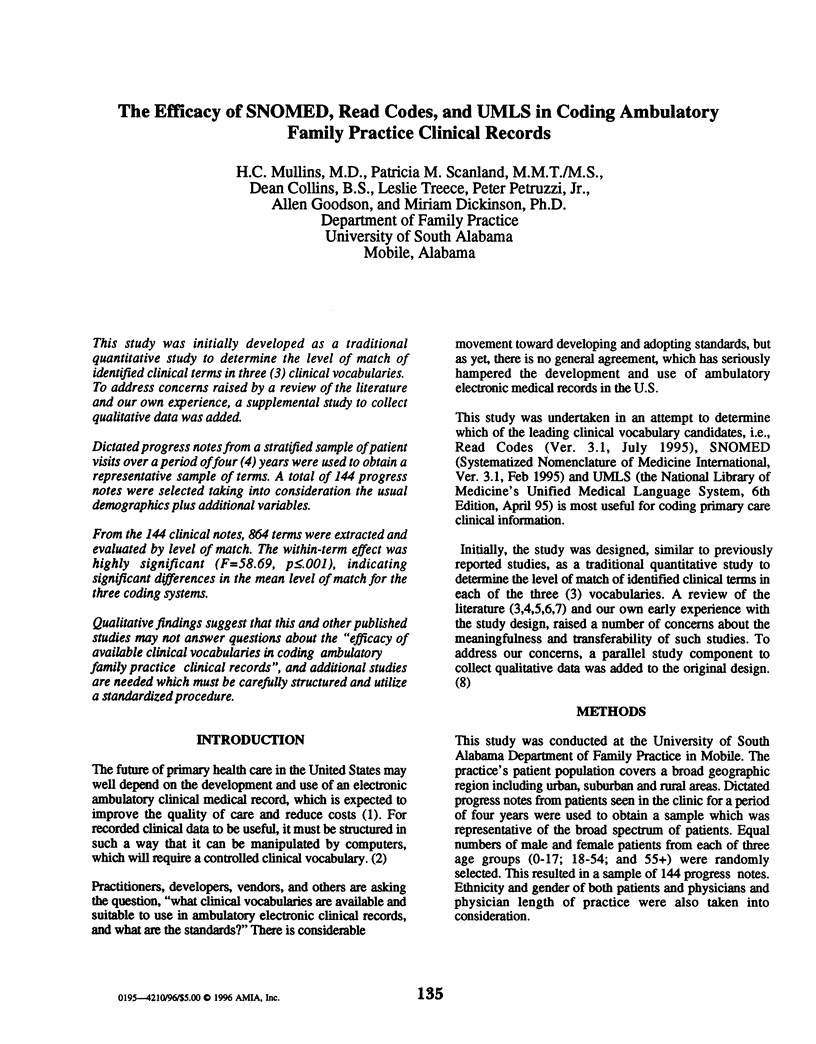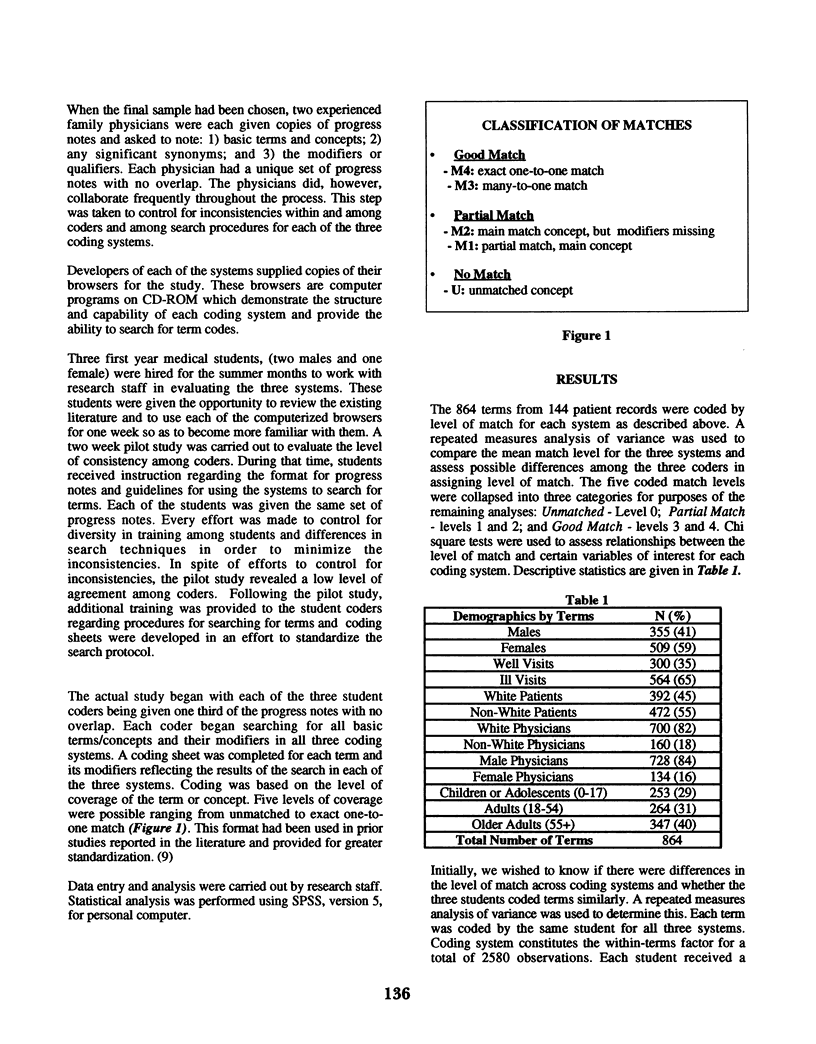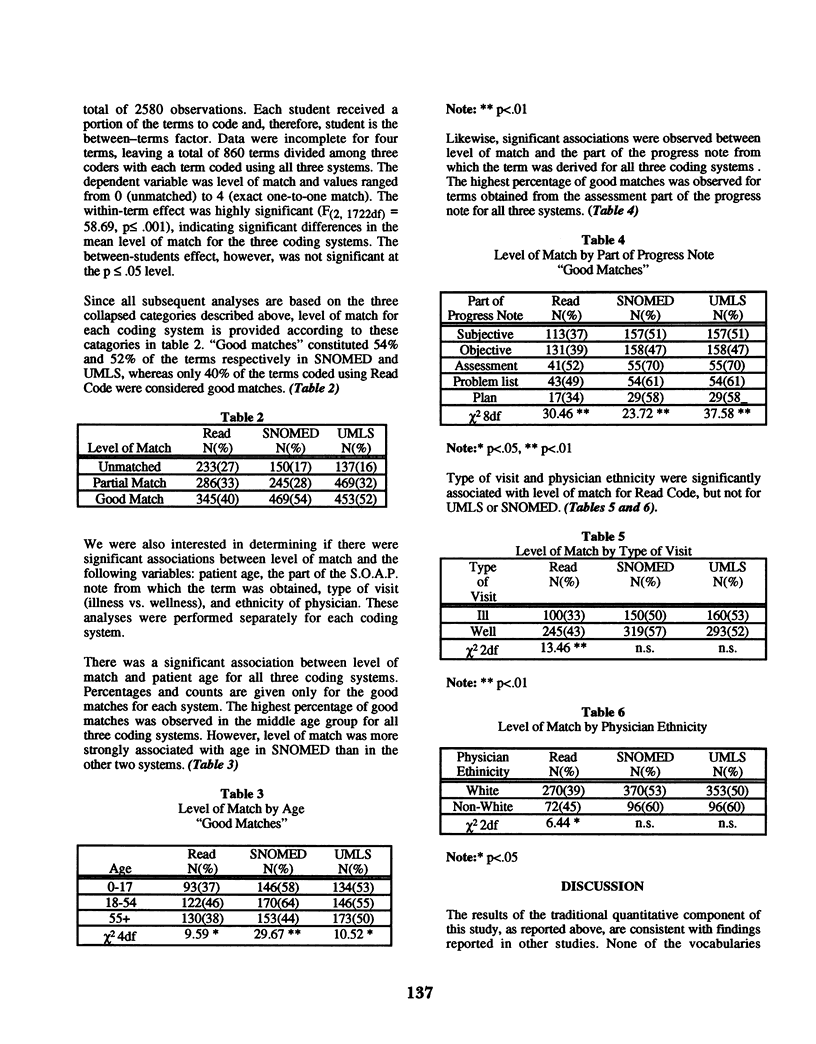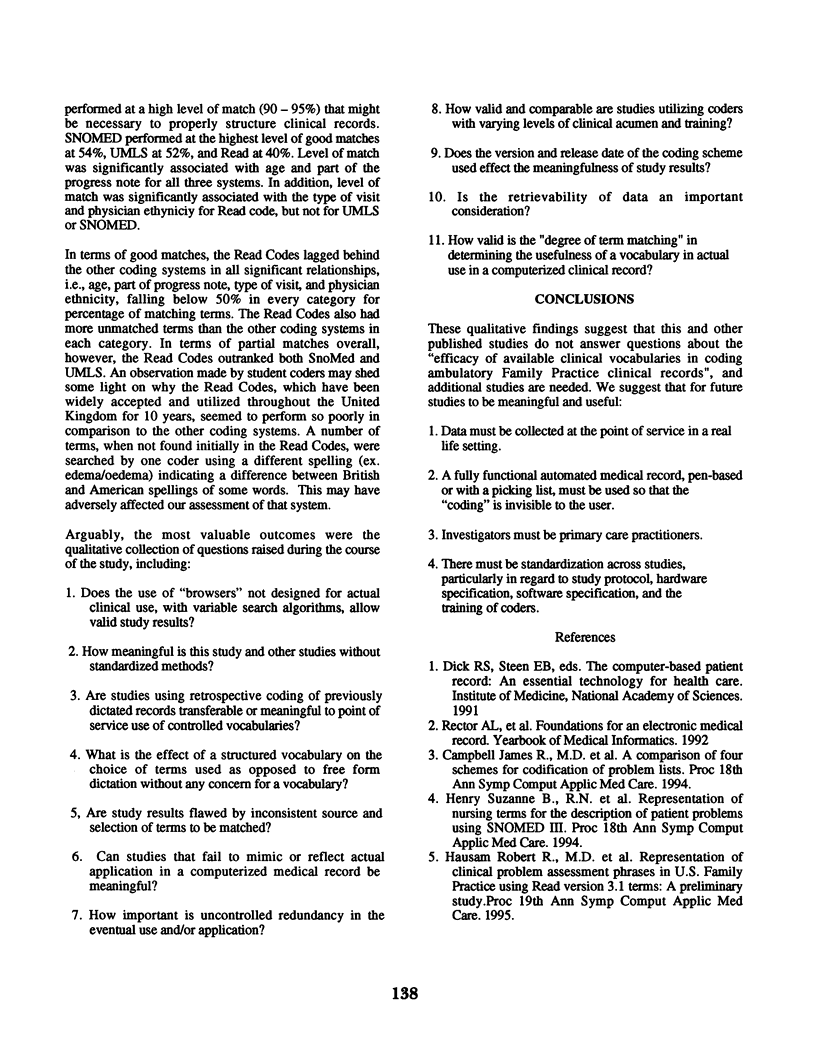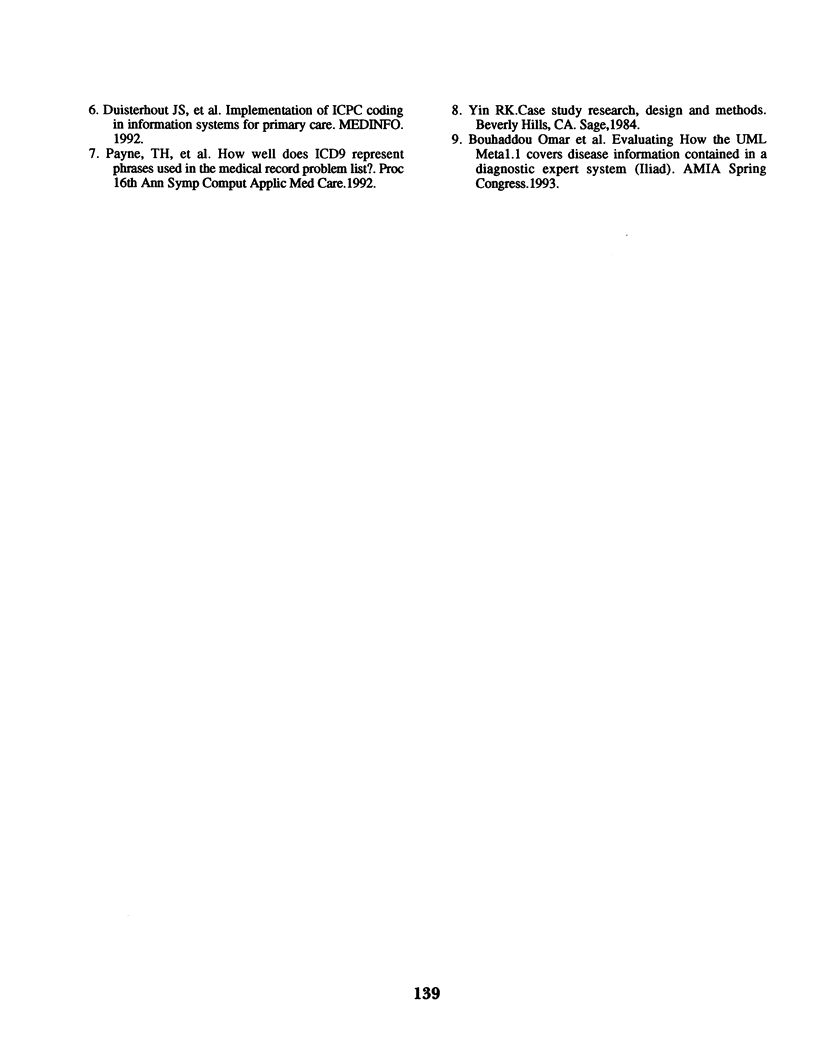Abstract
This study was initially developed as a traditional quantitative study to determine the level of match of identified clinical terms in three (3) clinical vocabularies. To address concerns raised by a review of the literature and our own experience, a supplemental study to collect qualitative data was added. Dictated progress notes from a stratified sample of patient visits over a period of four (4) years were used to obtain a representative sample of terms. A total of 144 progress notes were selected taking into consideration the usual demographics plus additional variables. From the 144 clinical notes, 864 terms were extracted and evaluated by level of match. The within-term effect was highly significant (F = 58.69, p < or = .001), indicating significant differences in the mean level of match for the three coding systems. Qualitative findings suggest that this and other published studies may not answer questions about the "efficacy of available clinical vocabularies in coding ambulatory family practice clinical records", and additional studies are needed which must be carefully structured and utilize a standardized procedure.
Full text
PDF